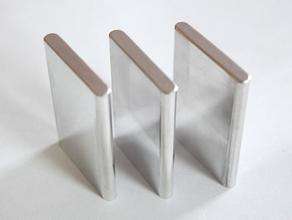How to use LiPo battery checker
Jul 17, 2019 Pageview:1218
Do you have or use Lithium Polymer batteries in your home or anywhere else· And how much do you know about the safe use of these batteries·
These are among the most powerful batteries in the world. With a LiPo pack, you have enough power to run most electronic devices. However, before you use them, there are some instructions and safety precautions you need to be aware of. In this guide, we are going to discuss the use of one very important tool – the LiPo battery checker.
LiPo battery checker instructions
A LiPo battery checker is a device used to check the voltage of each cell in a pack. This is a very important exercise if you are building your pack. Since LiPo batteries are very vulnerable, you want to make sure nothing goes wrong.
The voltage checker is equipped with a micro-processor and an LCD screen that can help you read the actual voltage of a cell. This device is also used to get the correct charging capacity of a new battery.
Before we look at the instruction using a LiPo battery checker, let’s begin by going through some general rule for using any lithium batteries:
· Check the condition of the batteries before charging. There have been many reports of explosions in many homes because people were not careful enough to use the batteries appropriately. Before charging your LiPos, check to ensure that there are punctures or damages. The lithium ions inside the batteries do not like to come into contact with air. This is one of the major causes of explosions. If the battery is bloated, swollen, expanded or deformed, do not attempt charging. Such batteries are more vulnerable to explosions, and any small exposure to heat turns into huge fires.
Here is another important use of the LiPo battery checker. Check for the voltage in the batteries before charging. If it is below 3.3v, consider it a dead battery and avoid any attempt to recharge. The rate of reaction at this stage is very high, and you are likely to witness an explosion.
· Never leave batteries unattended while charging. You might not have noticed an issue when plucking it on charge and that can be dangerous. You need to be there to monitor for hissing, popping, smoke, fires, overheating, and other signals that something is wrong. In case such a thing happens, immediately discontinue charging.
· Avoid charging batteries in, or near flammable material. For instance, charging batteries while they are in your robot is not advisable.
Now that we have made that clear, we can get back to using LiPo battery checkers. All checkers have more or less similar features and functions. Once you have purchased one, make sure the safety instructions are well included.
The LiPo battery checker has specifications on how much cells they can be used for. In most cases, the pack should not have more than 6 LiPo batteries. They are not designed to handle batteries of other cells and sizes, which is why you need to specifically use LiPo batteries. The voltage of each cell may change and vary from time to time during the measuring process. Note that, there are different factors that may affect battery voltage even when not in use, things like the battery itself, the ambient temperature and many others all play a huge role in the battery’s performance.
In addition to that, here are some general instructions:
· Be careful never to connect the batteries in reverse. Reverse connection reverses the current flow, which will damage the inside of the checker.
· Avoid getting the checker wet. LiPo battery checkers are made with electronic circuits which don’t go very well with water. If water or any solution enters the casing, the circuits will be damaged, rendering the whole thing useless.
· Avoid combustible material. Just like you should not leave LiPo batteries near things that can easily catch fire, you must avoid using LiPo battery checker near such materials. There are dangers of abnormal heat, which can cause huge loses.
· Use the code carefully. Pinching it, for instance, may cause a short circuit that can end in an explosion.
· Once you have used the checker, disconnect the battery pack.
LiPo battery checker usage
A LiPo battery checker is an important device used to make sure one has the right voltage before using LiPo battery packs. Using the checker may seem simple, but it is a bit tricky.
First, let us consider the LiPo battery anatomy. Your LiPo batteries come with two connectors, a balance connector, and a T-connector. The T-connector shows full voltage across all the cells. It is the connector that supplies power in your robot.
The Balance connector, on the other hand, has three cells. It is through this connector that you can access each cell. This can allow you to monitor and charge your cells.
The LiPo battery checker is a vital device recommended to be used for monitoring each cell. They will send a signal when the battery gets too low so that you can charge them again. Note that Lithium batteries have a minimum voltage they cannot drop below; if that happens, your batteries are destroyed.
Here is how to attach the checker:
· Attach the Checker starting with the ground wire on the balance connector. Find this wire at the furthest side from the red connector. Connect the ground wire to the – minus symbol. It is on the back of the checker. It will make noise once it is connected.
It is recommended that you connect the checker every time you run your robot. This will help you save your batteries from potential damage. Connect it when you are charging the batteries as well to avoid overcharging.
What do you need to pay attention to when you use a LiPo battery checker·
Using a LiPo battery checker is mandatory if you want your LiPo batteries to last long enough. Pay attention to the sound your checker makes. This will ensure you take the necessary steps as soon as the charge starts to flash.
Conclusion
Using a LiPo battery checker is a good way to have your batteries serve you longer. It helps avoid overcharging or over-draining the batteries. We hope you can now use it appropriately every time you use your robot.
- Prev Article: How much do you know about 18650 battery bank?
- Next Article: How much do you know about puffy LiPo batteries?
Leave Message
Hottest Categories
-
Hottest Industry News
-
Latest Industry News













